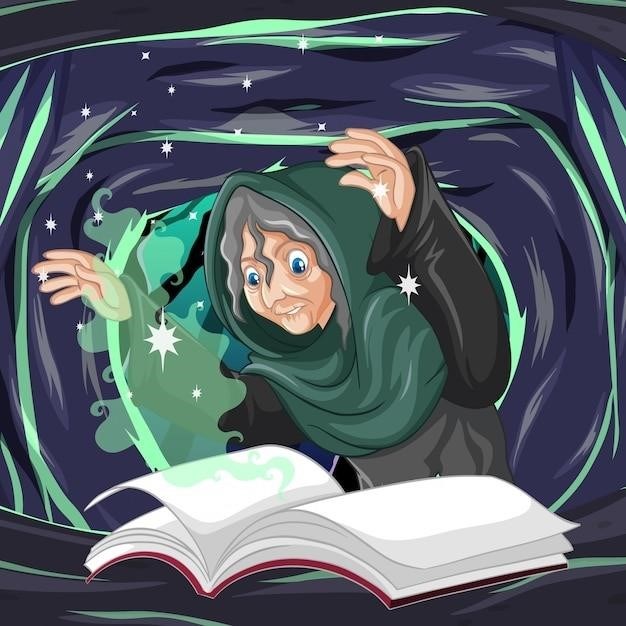Lord of the Flies PDF⁚ A Comprehensive Guide
This comprehensive guide delves into the digital format of William Golding’s iconic novel, “Lord of the Flies,” exploring its availability, key features, and the lasting impact it has had on readers worldwide.
Introduction
William Golding’s Lord of the Flies, a chilling tale of human nature and the descent into savagery, has captivated readers for generations. This thought-provoking novel, first published in 1954, explores the dark side of humanity through the lens of a group of British schoolboys stranded on a deserted island after their plane crashes. The novel’s enduring popularity has led to its widespread availability in various formats, including the readily accessible PDF version.
The PDF format has revolutionized the way we access and interact with literary works. It offers a convenient and portable means of reading, allowing readers to carry entire libraries in their digital devices. In the case of Lord of the Flies, the PDF format provides a digital replica of the printed text, preserving the original layout, illustrations, and formatting. This allows for a faithful and immersive reading experience, much like holding the physical book itself.
This guide will delve into the world of Lord of the Flies PDFs, exploring their availability, key features, and the advantages they offer to readers; We will discuss the different platforms where these PDFs can be found, the benefits of accessing the full text digitally, and the unique features that make the PDF format a popular choice for engaging with this classic novel.
Availability and Formats
The accessibility of Lord of the Flies in PDF format is a testament to its enduring popularity and the ever-evolving landscape of digital literature. Several avenues exist for acquiring this digital version of the novel, catering to different reader preferences and needs.
Online platforms like Google Drive offer free downloads of Lord of the Flies PDFs, making the book readily accessible to a wide audience. These PDFs often come in high-quality formats, ensuring clear readability and a pleasant reading experience. Additionally, websites dedicated to sharing books and educational resources frequently host Lord of the Flies PDFs, providing a convenient platform for students and educators to access the novel.
For those seeking more interactive and feature-rich options, dedicated e-book platforms like Amazon Kindle offer Lord of the Flies in PDF format, along with other digital formats. These platforms often incorporate features like adjustable font sizes, bookmarking, and highlighting, enhancing the reading experience. Moreover, e-book platforms often provide access to annotations, study guides, and other supplementary materials, further enriching the engagement with the novel.
The availability of Lord of the Flies PDFs in various formats and through diverse platforms underscores its enduring relevance and the power of digital literature to connect readers with classic works across generations.
Understanding the Digital Format
The PDF format, short for Portable Document Format, has revolutionized the way we interact with digital documents, including literary works like Lord of the Flies. Its inherent versatility and compatibility across different operating systems and devices make it an ideal choice for sharing and accessing books electronically.
Unlike traditional printed books, PDFs offer a range of functionalities that enhance the reading experience. Users can adjust font sizes to suit their preferences, making the text more legible. The ability to bookmark specific pages allows readers to easily navigate through the book, returning to particular sections with ease. Furthermore, PDFs often support highlighting and annotation features, enabling readers to mark important passages, jot down notes, and engage with the text in a more interactive way.
The PDF format also facilitates accessibility, allowing users with visual impairments to adjust font styles and sizes, or even utilize screen readers to access the text. This feature ensures that Lord of the Flies, with its complex themes and insightful prose, remains accessible to a wider audience. The digital format, therefore, plays a significant role in promoting inclusivity and fostering a deeper connection between readers and the timeless story of Lord of the Flies.
Accessing the Full Text
For those eager to delve into the entirety of William Golding’s thought-provoking novel, “Lord of the Flies,” accessing the full text in PDF format presents a convenient and readily available option. The digital realm offers a plethora of resources for acquiring this classic work, catering to various preferences and needs.
Numerous websites dedicated to sharing literary works provide free downloads of “Lord of the Flies” in PDF format. These platforms often offer multiple versions of the book, allowing readers to choose the one that best suits their reading style and device. Additionally, online libraries and educational institutions frequently provide access to digital copies of “Lord of the Flies” in PDF format, often accessible through student accounts or library memberships.
For those seeking a more curated and organized reading experience, dedicated eBook platforms like Amazon Kindle or Barnes & Noble Nook offer digital versions of “Lord of the Flies” that can be downloaded directly to compatible devices. These platforms often provide enhanced features like adjustable font sizes, highlighting tools, and the ability to create personal notes, further enriching the reading experience. In essence, accessing the full text of “Lord of the Flies” in PDF format is a simple and accessible endeavor, allowing readers to engage with the novel’s profound themes and powerful narrative at their convenience.
Downloading and Reading Options
Downloading and reading “Lord of the Flies” in PDF format presents a versatile and convenient approach to engaging with this timeless classic. The digital landscape offers a multitude of options for acquiring and enjoying the novel, catering to various preferences and technological capabilities.
For those seeking a straightforward and readily available option, numerous websites dedicated to sharing literary works offer free downloads of “Lord of the Flies” in PDF format. These platforms often provide multiple versions of the book, allowing readers to choose the one that best suits their reading style and device. Additionally, online libraries and educational institutions frequently provide access to digital copies of “Lord of the Flies” in PDF format, often accessible through student accounts or library memberships.
For a more streamlined and immersive reading experience, dedicated eBook platforms like Amazon Kindle or Barnes & Noble Nook offer digital versions of “Lord of the Flies” that can be downloaded directly to compatible devices. These platforms often provide enhanced features like adjustable font sizes, highlighting tools, and the ability to create personal notes, further enriching the reading experience. Furthermore, mobile apps designed specifically for reading PDFs are readily available, offering a user-friendly interface for navigating the digital text, adjusting font sizes, and highlighting key passages. In essence, downloading and reading “Lord of the Flies” in PDF format offers a flexible and accessible approach, allowing readers to immerse themselves in Golding’s thought-provoking narrative on their preferred devices and at their own pace.

Key Features of the PDF
The PDF format of “Lord of the Flies” offers a distinctive set of features that enhance its accessibility, readability, and functionality, making it a popular choice for students, educators, and avid readers alike. One of the defining characteristics of the PDF format is its ability to preserve the original layout and formatting of the printed book. This ensures that readers can experience the text as it was intended, with accurate page numbers, chapter divisions, and visual elements like headings and subheadings. The portability of the PDF format is another significant advantage. Users can easily transfer the file across various devices, including computers, tablets, and smartphones, allowing them to access the text anytime and anywhere.
Furthermore, the PDF format supports a wide range of features that enhance the reading experience. Users can adjust the font size and style to suit their preferences, making the text more legible and comfortable to read. The ability to highlight key passages and add annotations directly within the PDF file allows for a more interactive and personalized reading experience, making it particularly useful for students and researchers. In addition to these features, the PDF format often allows for the inclusion of hyperlinks, enabling readers to easily navigate to specific sections within the text or access external resources like websites or online dictionaries. This feature enhances the learning experience by providing context and expanding on the information presented in the book. In summary, the PDF format of “Lord of the Flies” offers a robust and versatile reading experience, combining portability, customizable features, and enhanced functionality to make the text readily accessible and engaging for a wide audience.

Symbolism and Analysis
The PDF format of “Lord of the Flies” offers a unique platform for in-depth analysis of the novel’s rich symbolism. The iconic “Lord of the Flies” itself represents the primal savagery and evil that lurks within human nature. It serves as a powerful symbol of the boys’ descent into chaos and the corrupting influence of their own instincts. The conch shell, on the other hand, embodies order, civilization, and democratic principles. Its presence signifies the boys’ initial attempt to establish a society based on reason and cooperation. The island itself is a microcosm of the world, representing both the beauty and danger of nature. Its pristine beaches and lush vegetation contrast sharply with the dark and treacherous jungle, symbolizing the duality of human nature.
The fire, a symbol of hope and potential for rescue, also becomes a source of destruction and danger as the boys’ obsession with it leads to chaos and the burning of the island. The pig’s head, transformed into the “Lord of the Flies,” represents the boys’ descent into savagery and the triumph of primal instincts over reason. Analyzing these symbols within the PDF format allows readers to explore the novel’s themes of civilization versus savagery, the corrupting influence of power, and the fragility of human nature. The ability to highlight key passages, add annotations, and access external resources within the PDF format makes it an ideal tool for in-depth analysis, enabling readers to delve deeper into the symbolism and meaning embedded within William Golding’s classic tale.
Controversial Themes and Censorship
The PDF format of “Lord of the Flies” has not only facilitated its widespread accessibility but has also sparked controversies and censorship debates. The novel’s exploration of human nature, particularly its darker aspects, has led to challenges and bans in some educational settings. The depiction of violence, sexual themes, and the boys’ descent into savagery have been cited as reasons for concern. The novel’s exploration of the fragility of civilization and the potential for evil within human beings has raised questions about its suitability for young readers, leading to discussions about censorship and intellectual freedom.
The PDF format has amplified these debates, providing a readily available platform for examining the controversial themes within the text. The ability to easily share and access the PDF has allowed for wider discussions and critiques of the novel’s content. While some argue that the novel’s themes are too mature for younger audiences, others maintain that it is a valuable literary work that sparks important conversations about human nature and the challenges of society. The controversy surrounding “Lord of the Flies” highlights the complex relationship between literature, censorship, and the interpretation of sensitive themes, making the PDF format a vital tool for engaging in these debates and exploring the novel’s lasting impact on society.
Adaptations and Remakes
The enduring popularity of “Lord of the Flies” has led to numerous adaptations and remakes across various mediums, with the PDF format playing a key role in facilitating these endeavors. The availability of the novel’s text in PDF format has provided screenwriters, directors, and other artists with easy access to the source material, enabling them to reinterpret and reimagine the story for different audiences.
One notable adaptation is the 1963 film directed by Peter Brook, which captured the novel’s dark themes with stark realism. The 1990 remake, directed by Harry Hook, offered a more contemporary interpretation of the story, with a focus on visual effects and updated themes. The availability of the PDF format has also enabled the creation of stage adaptations, musical productions, and even video games, further expanding the novel’s reach and impact on popular culture. These adaptations often draw upon the original text, readily available in PDF format, to capture the essence of Golding’s story while providing unique interpretations for different audiences. The PDF format has thus become a vital tool for adapting “Lord of the Flies” for diverse platforms and ensuring its continued relevance in the modern world.
The Enduring Legacy of Lord of the Flies
Beyond its availability in PDF format, “Lord of the Flies” has left an indelible mark on literature and popular culture, becoming a cornerstone of high school reading lists and sparking countless discussions about human nature. The novel’s enduring legacy is evident in its continued relevance to contemporary issues, such as societal breakdown, the dangers of unchecked power, and the struggle between civilization and savagery. The PDF format has played a crucial role in perpetuating this legacy, making the novel readily accessible to students, educators, and readers worldwide. The ease with which “Lord of the Flies” can be accessed and shared in PDF format has contributed to its widespread distribution and analysis, ensuring that its themes and insights remain relevant for generations to come.
The availability of the PDF format has also facilitated the creation of countless academic essays, critical analyses, and scholarly discussions surrounding the novel’s themes and symbolism. These resources, often shared and disseminated in PDF format, contribute to the ongoing exploration and understanding of “Lord of the Flies,” cementing its status as a literary touchstone. The PDF format has thus become a vital tool for ensuring that “Lord of the Flies” remains a powerful and thought-provoking work, its themes and lessons resonating with readers across time and cultures.
The availability of “Lord of the Flies” in PDF format has revolutionized the way readers engage with this classic novel. It has made the text accessible to a wider audience, facilitating deeper analysis and discussion. From students researching for essays to educators seeking supplementary materials, the PDF format has become an essential tool for exploring the complexities of Golding’s work. The ability to download, annotate, and share “Lord of the Flies” in PDF format has not only preserved its enduring legacy but has also fostered a continued dialogue about its timeless themes.
While the PDF format offers a convenient and readily accessible way to experience “Lord of the Flies,” it is important to remember that the novel’s power lies in its depth and nuance. The digital format should be seen as a stepping stone to a more profound engagement with the text. By delving into the intricacies of Golding’s prose, exploring the symbolism, and engaging with the characters on a deeper level, readers can truly appreciate the enduring relevance of this literary masterpiece. Whether accessed through a digital screen or a traditional paper copy, “Lord of the Flies” continues to be a compelling exploration of human nature and the enduring power of literature.


